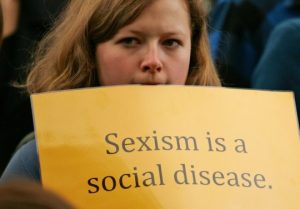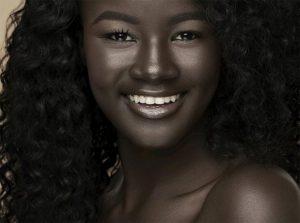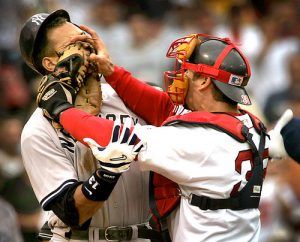For many years, racism has been a huge problem in society. This has been an issue for many years, and is something that continues to be a huge issue in society today. This is a huge problem, especially in the field of arts and entertainment.
A place where celebrities face the most racism is at the award ceremonies. Racism is defined as an individual’s prejudicial attitudes and discriminatory behavior toward people of a given race. In these ceremonies, it is usually the white male or female actors/ actresses winning the awards. Black, Hispanic, and other races of celebrities are barely seen winning any of these awards. It is evident that the small number of black/ Hispanic celebrities winning awards at these ceremonies affects them. People tend to look at them lowly, because of the fact that they are not really expected to win. This causes both prejudice (negative prejudgments) and discrimination (negative behaviors) toward people of these races. The people who devalue African Americans are people who have lower career aspirations (Brown). This means that people who are racist tend to be lower on the career spectrum, and that their prejudicial opinions can be the primary cause. When celebrities of these races win awards, such as Oscars, it is not as acknowledged as it should be, or is acknowledged too much but more in a negative way. All actors/ actresses put in the same amount of effort in their work, yet only the white actors/ actresses are acknowledged for their hard work. The lack of attention for black celebrities is something that affects them.
This past year, the Oscars made history with the most black winners ever. Every year since 2007, only one black celebrity has won an Oscar. This year, two black celebrities won Oscars. Although this was not a big number gap, it is still more than the typical one black celebrity who wins an Oscar. The black celebrities who won the Oscars this year are Mahershala Ali (Moonlight) and Viola Davis (Fences). As the years go on, at this rate, more Black/ Hispanic celebrities should be winning more Oscars, and shouldn’t be discriminated against because of their race.
-Tess P.
Works Cited
Brown, Danice L. “African American career aspirations: Examining the relative influence of internalized racism.” PsycINFO, Apr. 2016, web.b.ebscohost.com.rlib.pace.edu/ehost/detail/detail?vid=8&sid=b00fce12-52b2-454c-baf3-6f8d7de256a0%40sessionmgr102&hid=101&bdata=JmxvZ2luLmFzcCZzaXRlPWVob3N0LWxpdmUmc2NvcGU9c2l0ZQ%3d%3d#AN=2016-09071-006&db=psyh.
Nolfi, Joey. “Oscars 2017: History made with most black winners ever.” Entertainment Weekly, 27 Feb. 2017, ew.com/awards/2017/02/26/oscars-2017-black-acting-winners/.
Myers, D. G. (2015). Exploring social psychology. New York, NY: McGraw-Hill Education.







 13 Reasons Why, the Netflix adaption of Jay Asher’s 2007 novel, has schools parents and health care professionals in an uproar. The show is about a teen girl, Hannah, who commits suicide and leaves behind 13 tapes listing off 13 people she feels where responsible for her death. Netflix took on the show stating teen suicide and sexual assault are things that we don’t really talk about, but they happen often. Since there is so much stigma surrounding suicide and sexual assault, teens are afraid to reach out for help when they need it. In several episodes of the Netflix original there are graphic depictions of sexual assault and the last episode shows Hanna’s suicide in graphic detail. They even opted to change the method by which she killed her self in the book, overdosing on pills, for the more dramatic and graphic slitting of her wrists. The directors bold decisions to depict an on screen suicide has many parents and health care professionals worried that this will romanticize and encourage suicide attempts. “Some mental health experts say the show could pose health risks for certain young people, such as those who have suicidal thoughts. Others suggest the show provides a valuable opportunity to discuss suicide risk with young people, as well as teaching them how to identify warning signs of depression or suicidal thoughts among their peers. Among American young people, those between ages 10 and 24, suicide is the third leading cause of death… Each year, about 157,000 people in that age range receive medical care for self-inflicted injuries at emergency departments across the United States”(Howard,). Experts are worried the “suicide contagion” phenomenon will increase these numbers.
13 Reasons Why, the Netflix adaption of Jay Asher’s 2007 novel, has schools parents and health care professionals in an uproar. The show is about a teen girl, Hannah, who commits suicide and leaves behind 13 tapes listing off 13 people she feels where responsible for her death. Netflix took on the show stating teen suicide and sexual assault are things that we don’t really talk about, but they happen often. Since there is so much stigma surrounding suicide and sexual assault, teens are afraid to reach out for help when they need it. In several episodes of the Netflix original there are graphic depictions of sexual assault and the last episode shows Hanna’s suicide in graphic detail. They even opted to change the method by which she killed her self in the book, overdosing on pills, for the more dramatic and graphic slitting of her wrists. The directors bold decisions to depict an on screen suicide has many parents and health care professionals worried that this will romanticize and encourage suicide attempts. “Some mental health experts say the show could pose health risks for certain young people, such as those who have suicidal thoughts. Others suggest the show provides a valuable opportunity to discuss suicide risk with young people, as well as teaching them how to identify warning signs of depression or suicidal thoughts among their peers. Among American young people, those between ages 10 and 24, suicide is the third leading cause of death… Each year, about 157,000 people in that age range receive medical care for self-inflicted injuries at emergency departments across the United States”(Howard,). Experts are worried the “suicide contagion” phenomenon will increase these numbers.


